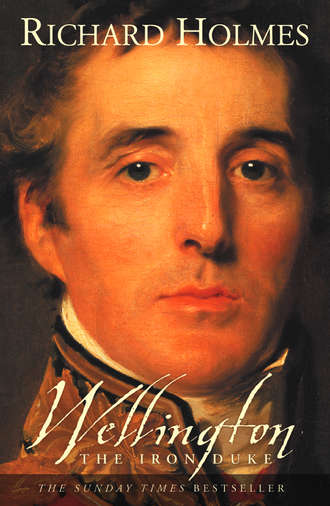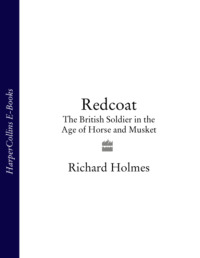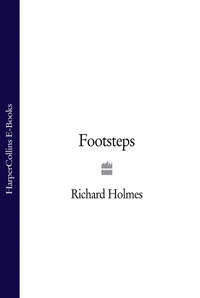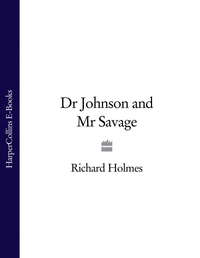
Полная версия
Wellington: The Iron Duke
Mynheer Gludenstack lies interred here
Who intended to have gone home last year.
The British cemetery at Seringapatam was established in 1805, not long after the British took the place, and now lies forgotten behind the Fort View Hotel. The tombs inside range from enormous obelisks, one commemorating the garrison commander and another the colonel of the Swiss Regiment de Meuron (a long way from his valleys), to more modest slabs. A sergeant’s wife, dead at twenty-two, lies there with her child, and the wife of a private in HM’s 9th Lancers evidently had enough money to bestow on her husband in death a status that had eluded him in life. Some died shortly after their arrival in India or, more poignantly still, in the world itself. Others – a retired park-sergeant here and colonel’s widow there – had lived on to a ripe old age. There were indeed fortunes to be made in India, but more than half of the Europeans who went there in the eighteenth century died prematurely.
Colonel Wesley, travelling in a fast frigate, caught up with his regiment at the Cape, and he sailed on in the Indiaman Princess Charlotte, whiling away his time with his extensive library. It was weighted heavily towards Indian themes, and included Orme’s Indostan, Sketches of the Hindoos, Raynal’s Histoire des Indes and Statutes Relative to the East India Company, as well as Persian and Arabic grammars. There was a good deal of military history, including a book on the Flanders campaign, fifteen volumes on Frederick the Great and Major General Lloyd’s formalistic Reflections on the General Principles of War. Chapman’s Venereal Disease might have been a sensible precaution, while nine volumes of Woman of Pleasure and ten of the Aventures du Chevalier du Faublas catered for lighter moments. He landed in Calcutta in February 1797 and called on the governor-general, Sir John Shore, who found in him ‘a union of strong sense and boyish playfulness’, and predicted that he would distinguish himself if the opportunity arose.
Wesley lost no chance to chase the opportunity. Both Holland and Spain had now joined the war against Britain, and in August 1797 he was sent on an expedition to the Philippines. He drew up a list of hygiene precautions to be observed by the men. Hammocks were to be scrubbed at least once a fortnight, men were to wash their legs and feet every morning and if possible to have water thrown over them every day. He had agreed to take the Rev. Mr Blunt as chaplain to the 33rd, but during the voyage that gentleman got ‘abominably drunk, and in that disgraceful condition exposed himself to both soldiers and sailors … talking all sorts of bawdy and ribaldry …’ When Wesley, on another vessel, heard what had happened he tried to console Blunt, explaining that ‘what had passed was not of the least consequence as no one would think the worse of him for little irregularities committed in a moment of forgetfulness’, but Blunt’s depression could not be lifted and ‘he actually fretted himself to death’.4
The expedition was recalled when it reached Penang, and Wesley had returned to Calcutta by November. After his return William Hickey dined with him and John Cope Sherbrooke, the 33rd‘s second lieutenant colonel, at a party consisting of ‘eight as strong-headed fellows as could be found in Hindustan’. After twenty-two bumper toasts, they drank steadily till two in the morning: Hickey never experienced ‘a more severe debauch’.5 However, Wesley had by now heard news likely to ease even the worst hangover: his brother Mornington was being sent out to Calcutta as governor-general of British India. Richard was climbing as hard as he could, pressing Pitt for a marquessate, improving his coat of arms by judicious quarterings, and changing the spelling of the family name back to a form used until the seventeenth century. On 19 May 1798 Arthur, now down at Madras, signed himself Wellesley for the first time in a letter to Lieutenant General George Harris, commander-in-chief there, announcing that the new governor-general had just arrived. The three brothers, for Henry had also come to serve as Mornington’s private secretary, sailed on to Calcutta. Arthur first acted as unofficial chief of staff to Richard, and was then sent to Madras with the 33rd to press ahead with preparations for war.
The impact of Richard’s arrival as governor-general on Arthur’s career can scarcely be overstated. India contained many more senior officers, but as the governor-general’s brother, he enjoyed great advantages in a world where patronage counted for so much. Mere influence could never cause the dull to shine, but it could give a bright man the opportunity to make his way. That is precisely what it did for Arthur Wellesley, and we should not be astonished that it caused great resentment amongst the less well-connected.
We might be more surprised by the level of Arthur’s own confidence. Andrew Roberts is right to observe that while it was possible to write a long book on Napoleon’s early career, not much could be said of Arthur Wesley until he took the 33rd to Flanders. By 1798, however, he was not only confident in his profession, but was capable of helping his brother hustle the governor of Madras along the road to war. His correspondence reveals the importance of the family nexus, in which Henry played an important role as go-between, but also shows not the least glimmer of self-doubt. Experience was soon to teach Arthur Wellesley that he might be let down by others – Richard amongst them – but he had utter confidence in himself and he never lost it.
Mornington had arrived already convinced that British India should be expanded. This was not simply a matter of personal ambition, although it could only accelerate his rise, but it would also contribute to the public good, enhancing the Company’s trading position, damaging French interests and, in a paternalistic sense, bringing good and settled government to more of the native population. He acted quickly to re-establish Britain’s influence over the Nizam of Hyderabad, nominally a liegeman of the Moghul emperor, who ruled a huge tract of central southern India. This was accomplished by the end of October 1798, leaving Mornington free to concentrate on a more dangerous target – Tipoo Sultan, the Tiger of Mysore.
Tipoo was the son of Hyder Ali, a Muslim who had seized the largely Hindu and vast southern state of Mysore. He had fought the British before and in 1790–92 he had been defeated by a previous governor-general, Lord Cornwallis, and was compelled to cede part of his territory. Unabashed, Tipoo had a mechanical model depicting a British officer being mauled by a tiger, which made the appropriate growls when set in motion. His habit of keeping his captives chained upright in a dungeon that flooded regularly, leaving them up to their necks in water, did not endear him to the British. Neither did his warm relations with the French, to whom he was Citizen Tipoo. Although French power in India had been broken during the Seven Years War, French agents and military advisers were active in several Indian courts and the prospect of a French revival was disconcerting. Less than a month after his arrival, Mornington read a proclamation by the governor of French Mauritius announcing an alliance between Tipoo and France.
In contrast to the views of his adversaries, Tipoo is affectionately remembered in Madras as a devout Muslim who practised religious toleration; a ruler anxious to enhance the economic strength of his state; an intellectual with a lively scientific interest; and a brave man who did not flinch from a death he might easily have avoided. His interest in technology had led him to develop rockets that resembled large versions of the familiar firework. Some of them were small enough to be carried in a quiver on a man’s back, and others were carried in carts fitted with adjustable frames from which they could be fired. The larger ones probably had a range of a thousand yards, and although they were inaccurate, they were terrifying to troops who were not used to them.
Arthur Wellesley and the 33rd sailed from Calcutta to Madras in August 1798. It was a dreadful voyage: their ship, the Indiaman Fitzwilliam, ran into a shoal and only the exertions of the soldiers got her out. The water aboard was so bad that although Wellesley himself was only afflicted with the flux, fifteen of his soldiers died. While still in Calcutta he had been trying to persuade Lord Clive, the newly arrived governor of Madras, that Mornington was not set on an immediate and unwarranted war, but after he reached Madras he worked hard to draw Clive into the war party. The governor was nicknamed ‘Puzzlestick’ by the Wellesleys, although Arthur wrote that ‘I doubt whether he is as dull as he appears, or as people think he is.’ Arthur found this sort of work uncongenial, and told Henry that he would consider becoming governor of Ceylon if there was no war. Then, gradually, Clive yielded to the pressure. Wellesley wrote to Henry that:
Now that he has begun to find out that he has no difficulty in transacting the business of the government, he improves daily, takes more upon himself, and will very shortly have less need for the opinions and abilities of those who have long done the business of the country.6
Clive’s senior civil servant, Josiah Webb, continued to oppose war, arguing that the British were less prepared for what would necessarily be a more extensive campaign than the one in which Lord Cornwallis had beaten Tipoo in 1790–92, but Wellesley argued that proper preparation would overcome many of the difficulties. Meanwhile, relations between Mornington and Tipoo worsened, with the governor-general writing sharply to the sultan that:
You cannot imagine me to be indifferent to the transactions which have passed between you and the enemies of my country; nor does it appear necessary, or proper, that I should any longer conceal from you the surprise and concern with which I perceived you disposed to involve yourself in all the ruinous consequences of a connexion, which threatens not only to subvert the foundations of friendship between you and the Company, but to introduce into the heart of your kingdom the principles of anarchy and confusion, to shake your own authority, to weaken the obedience of your subjects and to destroy the religion which you revere.7
Arthur’s own role in the war that now seemed almost inevitable was at first unclear. Detailed military preparations were in the hands of Colonel Henry Harvey Ashton of HM’s 12th Regiment and Lieutenant Colonel Barry Close of the Company’s service. The former was a few days senior to Wellesley, and was described by a subaltern as:
a great fox-hunter, a patron of the fancy, and a leading member of sporting circles. He had many good points about him; he was generous and brave, but he had a most inveterate disposition to quizzing, which involved him in many personal encounters, whereby he obtained the reputation of a professed duellist.8
Wellesley turned the 33rd over to his second-in-command, Major John Shee – not a wholly satisfactory arrangement, for in March the following year he wrote sharply to Shee that he had seen some of the regiment’s soldiers away from their battalion as it formed up, some of them without their muskets. Shee’s response was intemperate and offensive, and Wellesley warned him that he would show any similar letter to the commander-in-chief. However, he concluded that:
I have no intention whatever of doing anything which can have any effect unpleasant to your feelings, and that the best method of coming to such an understanding as we ought to live upon is, to inquire before you act in consequence of anything that passes. Of this you may be certain, that however my attention may be engaged by other objects, whenever I find it necessary I shall interfere in everything that concerns the 33rd.9
When Wellesley joined General Harris’s staff he was overshadowed by Ashton and Close. Then, in December 1798 Ashton was seriously wounded in a duel with his senior major. Wellesley rode from Madras to Arnee, in the army’s forward concentration area, to take command. Ashton lived long enough to give him his grey Arab charger Diomed: then, on 23 December 1798, he died. Wellesley, now in charge of the troops in the Arnee-Vellore-Arcot area set about the careful logistic preparation that was to become his hallmark. It is 250 hot and jungly miles from Madras to Mysore as the crow flies, and more on the primitive roads along which the army would have to travel. The force had both British and Indian units, and both relied heavily on purchasing food in local bazaars, which were soon exhausted by the unprecedented demand. Wellesley encouraged merchants to bring in goods from a wide area, and arranged for them to accompany the army when it moved, because it would be impossible for such a large force to live off the land. Contracts were agreed with ‘brinjarries’, described by Wellesley as ‘a class of carriers who gain a livelihood by transporting grain and other commodities from one part of the country to another. They attend armies, and trade nearly in the same manner as they do in common times of peace.’ They maintained their own bullock-trains, so that the army could be supplied with grain without the need to buy its own bullocks.
Lastly, when the army reached Seringapatam, the modern fortress close to Mysore, it would need heavy siege guns to batter the walls, and by early 1799, Wellesley had assembled two 24-pdrs, thirty 18-pdrs and eight long 9-pdrs, complete with 1,200 rounds per gun. Daily battalion drill was instituted, and Wellesley ensured that battalions were combined into brigades and gained experience of drilling together. There was even target practice with live ammunition.
Mornington arrived in Madras on 31 December 1798. He had originally hoped that General Sir Alured Clarke, commander-in-chief of all British troops in India, would command the expedition, but the situation in the north was unstable and so Clarke had been left in Calcutta. The honest and hardworking George Harris, commander-in-chief of the Madras army, was offered the command, but did not immediately take it. Modesty and lack of self-interest, combined with a recognition of the very real difficulties confronting the force, caused him to delay, but eventually he accepted because he considered it his duty to do so. Arthur Wellesley was no less aware of the difficulties, and on 2 January 1799, he told his brother Henry that the proposals made to Tipoo ought to be moderate, because he doubted if the war could be won in a single campaign, primarily because of the shortage of grain. He was somewhat more optimistic a week later, although he complained bitterly that he had been sent two Company’s officers to help, ‘one of them … so stupid that I can make no use of him, and the other such a rascal that half my occupation consists of watching him’.10
Although the governor-general was no soldier, he seriously considered accompanying the army, and got Henry to consult Arthur on the matter. Arthur firmly advised him against it:
It appears to me that your presence in the camp, instead of giving confidence to the General, would in fact deprive him of the command of the army … if I were in General Harris’s situation and you were to join the army, I should quit it.
In my opinion, he is at present awkwardly situated, and he will require all the powers which can be given him to keep in order the officers who will be in this army. Your presence will diminish his powers, at the same time that, as it is impossible you can know anything of military matters, your powers will not answer this purpose …11
Arthur’s loyalty to Harris was rewarded by particular praise for his ‘masterly arrangements in respect to supplies’. However, Harris told Arthur that he was reluctant to commend him publicly because ‘others would be displeased and jealous’, and Arthur himself admitted that, because of his relationship with the governor-general, others in the army thought him ‘very little better than a spy’.12
The governor-general took his brother’s wise advice, and remained in Madras whence, on 3 February 1799 he ordered an advance into Tipoo’s territory, with Harris moving up from the east with more than 20,000 troops, 4,300 of them European, while a smaller force from the Bombay army under Lieutenant General James Stuart advanced eastwards from the Malabar coast. Harris reached Amboor on 18 February, and was joined there by a contingent of the Nizam of Hyderabad’s army. There were four Hyderabad infantry battalions under Captain John Malcolm, with a mixture of British and Indian officers, a large force of Moghul cavalry – ‘some good, some bad’, wrote Wellesley – under Captain Patrick Walker, and thirty-six guns. The Company provided six infantry battalions, four from Madras and two from Bengal. The force was commanded by the Nizam’s chief minister (and perhaps son), Mir Allum. It was proposed to provide him with a senior adviser, and to stiffen his force with a British battalion. Wellesley and the 33rd were the logical choices, not least because Mir Allum, aware that Wellesley was the governor-general’s brother, actually asked for him.
The arrangement did not please everybody. Three of the four major generals in Harris’s army enjoyed substantial commands, but the fourth, David Baird, commanded a brigade far smaller than the Hyderabad force. Baird was a brave but tetchy Scot, one of whose officers called him ‘a bloody old bad-tempered Scotchman’. He got on badly with Indians, and his temper had not been improved by his long imprisonment by Tipoo in the previous war. Hearing that he was kept shackled to another prisoner, Baird’s mother observed that she was sorry for the man who was chained to her Davie. Baird complained to Harris that he should have been given the Hyderabad appointment, but Harris stuck to his decision.
The advance resumed on 21 February. The army was still in British-controlled territory, and the road had been carefully prepared. Nevertheless, progress was slow, perhaps ten miles a day, with a day’s halt every three, and it was not until 6 March that the main force at last entered Tipoo’s territory. When Cornwallis had invaded along the same route eight years earlier, Tipoo had defended Bangalore, but this time he demolished its defences and his troops fell back westwards, burning the crops as they went. This was a sound strategy, if a harsh one, for if there was no fodder for the bullocks in Harris’s army, the expedition could not succeed: it was the failure of supply that had forced Cornwallis to abandon his advance on Seringapatam in 1791. Tipoo’s irregular cavalry – Wellesley thought them ‘the best kind in the world’ – hung about Harris’s columns as they advanced, ready to exploit any gaps in the line of march, and making it impossible for all but the strongest of foraging parties to leave the main body.
On 10 March, enemy cavalry attacked Wellesley’s rearguard near Kellamungellum and overran a half-company of Madras infantry. Wellesley personally led the decisive counter-attack and was never pressed as hard afterwards. It was now clear that the main route to Bangalore was so badly ravaged that even the brinjarries were finding it hard to feed their bullocks, and Harris wisely swung south-west towards Cankanelli, heading directly for Seringapatam, and moving across country that Tipoo’s men had not had time to burn. Progress was still painfully slow, largely because of pay disputes amongst the Company’s bullock-drivers. There was good news from the west, however. On 15 March, Harris heard that Stuart’s column had beaten off a full-scale attack at Sedaseer, and that Tipoo’s army had recoiled eastwards. Harris’s force continued to trudge forwards across flat, fertile land laced with groves of trees known as topes.
Early on 27 March 1799, Harris set out for Malavelly, a straggling village six miles away from his previous camp; it contained abundant water and so was to be that evening’s campsite. It is unusually difficult to be sure of what happened, for contemporary accounts are unclear, and Malavelly itself has since straggled more widely. But what seems certain is that a large part of Tipoo’s main army, with two heavy guns, had taken up a position on a low ridge west of the village, blocking the main road. Although the quartermaster-general’s men were already laying out the camp in Malavelly, Harris decided to give battle as soon as he could, for if he defeated this section of Tipoo’s army, there would be less of it to defend Seringapatam. His force moved with its British contingent to the north of the road, and the Hyderabad army to the south; both columns preceded by cavalry and infantry outposts, the latter, ‘the pickets of the day’, drawn from all the infantry regiments.
The British force swung north-west of Malavelly, shaking out from column of march into line as it did so, though with natural obstacles ensuring that instead of all three leading brigades being side by side, they advanced with one up and two back. The Hyderabad army, perhaps five miles further south, also swung into line, each battalion moving in column, with its individual companies in column, one behind the other, with enough space between them to deploy into battalion line when the time came. HM’s 33rd was to the right front, near the main road, and the Company’s battalions were echeloned back to its left, each about 200 yards behind the one on its right. The Hyderabad battalions probably formed a reserve. Wellesley, mounted on Diomed, galloped along his line, checking that the spacings were correct and noting that the 33rd was now just ahead of the leading British brigade, across the road to its right. As he ascended the gentle ridge held by Tipoo’s men, he ordered his battalions to form line of battle, and quickly the advancing force completed its deployment into a long two-deep line.
Thus far Tipoo’s position had been marked by occasional puffs of white smoke as the cannon fired, but now a large force of infantry, 2–3,000 strong, came down the hill, making straight for the 33rd. What followed was a repeat of what had happened at Boxtel in 1794, and was the precursor of what was to occur in dozens of future encounters. Wellesley ordered the 33rd to halt, and then gave the order to fire. Although the Mysore troops ‘behaved better than they have ever been known to behave’, the measured volleys were too much for them, and although they ‘almost stood the charge of bayonets of the 33rd’, they took to their heels. On the other side of the road, Tipoo’s cavalry charged Baird’s brigade, but this was only to gain time so that the rest of his army could retreat, and it slipped away before Harris’s jaws could close around it.
Harris continued his advance on 28 March, swinging south to cross the broad River Cauvery not far from Sirsoli and then turning north to approach Seringapatam, neatly outflanking Tipoo’s field army as he did so. Tipoo, his confidence already shaken by defeats at Sedaseer and Malavelly, withdrew into the fortress. Seringapatam lies on an island in the Cauvery. At that time of year the river was almost dry, and both of its branches, the North and South Cauvery, could be crossed on foot with little difficulty. But things were very different in the rainy season, when the water was too deep for fording but too fast-flowing for boats to be used easily. With the change of seasons approaching, Harris needed to take the place by the end of May.
I first saw Seringapatam from across the South Cauvery just east of the main river’s fork, and it looks hugely impressive despite the passage of two centuries. White granite walls, their tops pierced with splayed brick-lined embrasures, rise thirty feet from a broad, wet ditch, invisible until an attacker is right on top of it. An inner belt of fortifications would have given the garrison some respite against an attacker who had penetrated the outer defences, and the main gates – the Bangalore gate to the east, the Mysore gate to the south, and the Water gate fronting the North Cauvery-are still entered through wide tunnels between layered defences. The tower of the Hindu temple and the twin towers of the mosque rise above the defences, and a scattering of palm trees lends an exotic air to the place.
Although the design of Seringapatam shows some Western influence, we cannot expect Tipoo’s French military advisers to have been hugely enthusiastic about it. Whereas European engineers, following the precepts of the great Vauban, strove to conceal most of their masonry behind a gently sloping earth glacis so that the attacker’s guns would have little to shoot at, the long, high walls of Seringapatam offered a vulnerable target. And though some of the fortress guns were mounted on high works jutting out from the front of the main line of the wall, these were not well developed enough to be bastions – the great arrowhead-shaped defences that were the essence of European artillery fortification. The former offered only a poor prospect of bringing flanking fire to bear on an attacker assaulting the main line of the wall.









